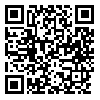BibTeX | RIS | EndNote | Medlars | ProCite | Reference Manager | RefWorks
Send citation to:
URL: http://jdm.tums.ac.ir/article-1-5409-en.html
Materials and Methods: In this retrospective cohort trial, 60 patients with the definitive diagnosis of Class II div. 1 malocclusion having ANB>2 and FMA angel between 20 and 30 and without any previous treatment or syndrome who were treated with twin-block or inclined anterior bite plan appliance were selected and their lateral cephalometries were traced before and after treatment. Selected distance and angular landmarks were measured on the cephalograms with the good reliability (ICC=0.953) and the changes occurred in the landmarks were statistically analyzed using Student t test.
Results: Due to the increased mandibular growth, most of the landmarks experienced significant changes following the treatment with twin-block and inclined bite plan (P<0.05). The appliances corrected Class II malocclusion through improvement of mandibular length and position, maxillary and mandibular skeletal and dental relationships (decreased ANB angle and overjet) and stability of mandibular plan inclination. No significant differences were found between the devices regarding most landmarks changes (P>0.05), however, SNA (P=0.04), overjet (P=0.007) and wits appraisal (P=0.004) changed differently after using the appliances.
Conclusion: Despite with most similarities of both twin-block and anterior inclined bite plan to correct class II div. 1 malocclusion, Due to the advantages of anterior inclined bite plan such as less size, good patient cooperation and simple laboratory preparations the appliance can be used as substitute for complex functional appliances to correct class II div. 1 malocclusion before the growth spurt.
Received: 2015/12/9 | Accepted: 2015/12/9 | Published: 2015/12/9
| Rights and Permissions | |
 |
This work is licensed under a Creative Commons Attribution-NonCommercial 4.0 International License. |




